Easy to make and flavored with a slight sourdough tang, these soft pull apart dinner rolls will be a welcome addition to any meal and a great use of your sourdough discard!

Jump to:
Why this recipe works
- Sourdough starter discard adds a light, tangy flavor
- Milk and potato flour keep these sourdough rolls soft and fluffy
- Great way to use unfed sourdough starter
Since I maintain a sourdough starter, I have a never-ending quest to find ways to use my weekly sourdough starter discard. I have quite a repertoire of sweet and savory sourdough recipes like pretzels, bagels, spice cake, focaccia, banana bread, and more. You can even use your unfed started to make Sourdough Discard Cinnamon Rolls.
Here's another delicious way to use unfed sourdough starter - Soft Sourdough Dinner Rolls
These soft sourdough rolls are A-M-A-Z-I-N-G!! They're fluffy and flavorful with just a tang of sourdough notes at the end.
Actually, these would better be called "Sourdough maybe-they'll-make-it-to-Dinner Rolls"...they're that good. You'll definitely want to serve them at Thanksgiving or Christmas.
That's dinner, improved!
Plus, check out my sourdough discard sandwich bread - it uses the same ingredients as these sourdough dinner rolls, just shaped in a different way. Soft and fluffy, you'll love the buttery flavor of this sandwich bread!
⭐⭐⭐⭐⭐
If I could give this recipe 10 stars, I definitely would! I just started sourdough starter 4 days ago and have been saving the discard in a jar in the fridge for the past 2 days because I hated throwing it out. With that being said, this is the FIRST time ever in my 53 years that I made anything with sourdough and I have no words to describe how amazing these came out, I'm not sure the word I'm looking for has even been invented yet - Just YUMOLA!
- Michele
Recipe Ingredients
You'll need the following ingredients to make this sourdough dinner rolls recipe:

Ingredient Notes
Flour: You can use all-purpose flour or bread flour. All-purpose flour is convenient for most people, but bread flour will produce a slightly chewier roll. The rolls will be still soft and fluffy no matter which type of flour you use.
Sourdough starter discard: Sourdough discard is unfed sourdough starter, i.e. the amount you remove from your crock before feeding the remainder (I do this weekly). Since it's not active starter, it's used for flavor rather than fermentation (you'll need yeast for that).
You can make these dinner rolls without the sourdough discard (see the Recipe Notes for how). The rolls just won't have that sourdough tang, but will still be delicious!
Yeast: I use instant yeast when I bake bread, but you can also use Active Dry yeast (see the FAQs for a discussion of the differences between them). If you'd like to omit the yeast and just use fed, active sourdough starter, see the instructions below.
Milk: Helps to make a softer dough. You can use any type of milk you have on hand, including whole, low-fat, non-fat, or even an unsweetened plain non-dairy milk. If you prefer, you can substitute 1 cup hot water and ¼ cup nonfat dry milk for the milk.
Potato flour: Helps keep the rolls soft and fluffy. If you choose not to use potato flour, increase the amount of flour to compensate.
See the recipe card for a full list of ingredients and measurements.
How to leave out the commercial yeast
If you don't want to use commercial yeast in this sourdough dinner rolls recipe, replace the yeast with ½ cup (114 grams) of active, fed starter, reduce the amount of flour by about ½ cup (57 grams), and reduce the milk by about ¼ cup (57 grams). The rising time will be longer (about double) for both the first and second rises. (Note: there are some rounding inconsistencies here due to the volume vs. weight measurement conversion.)
How to make sourdough discard dinner rolls
Like most dinner roll recipes, this one takes just a little bit of action. Most of the time is spent letting the dough rise.
Step 1: Make the dough and let it rise
Combine the dough ingredients in a stand mixer, then knead until a slightly tacky dough forms. Shape the dough into a smooth ball and place in a lightly oiled bowl. Allow the dough to rise until it has doubled in size, about 1 to 2 hours (photo 1).
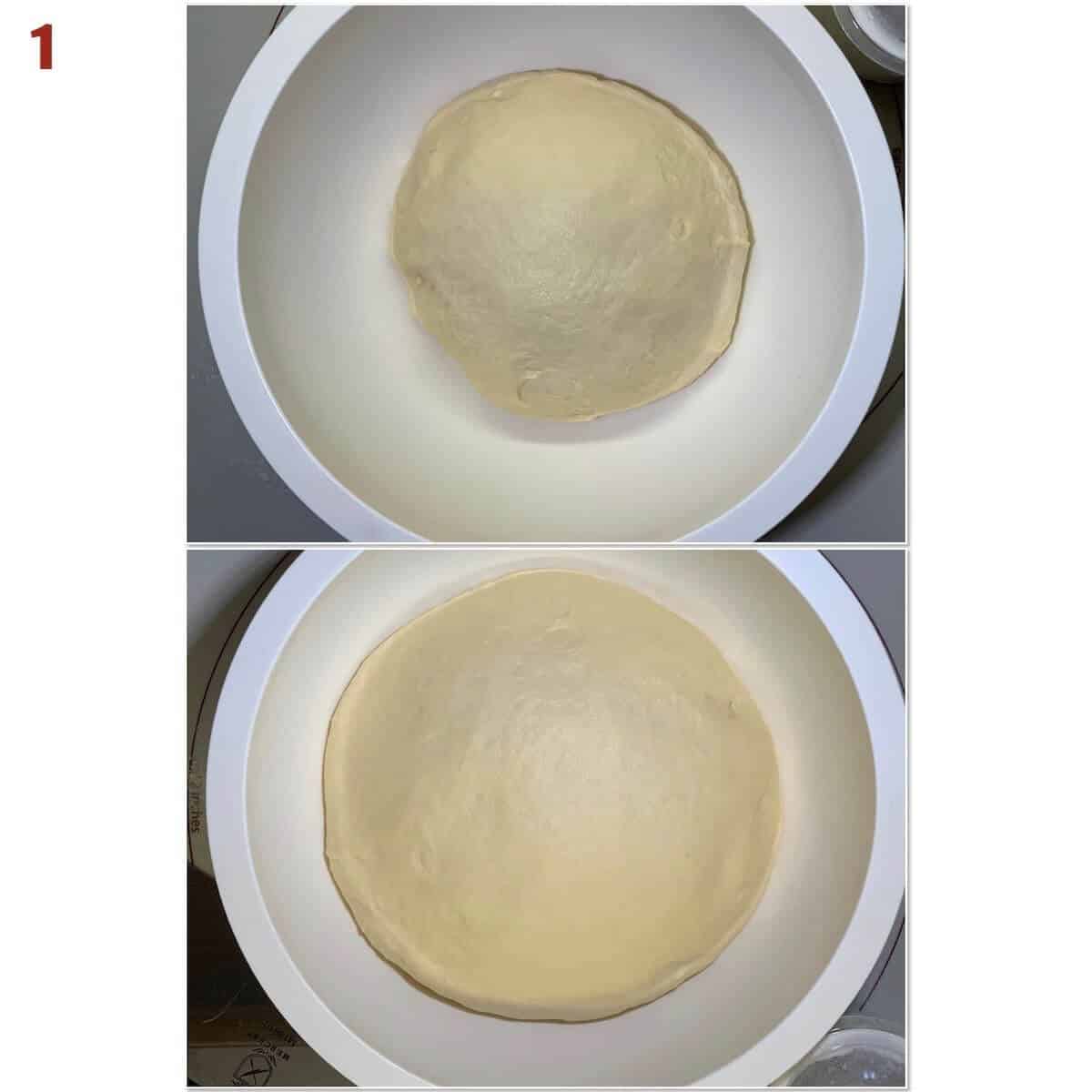
Step 2: Shape the dough into rolls
This soft, silky dough is now ready to be shaped into balls. Start by portioning the dough into 16 individual pieces (photo 2).

Roll each piece into a tight ball. Place 8 each into two 9-inch round cake pans (photo 3). Cover with plastic wrap and allow the rolls to rise until puffy (about an hour).
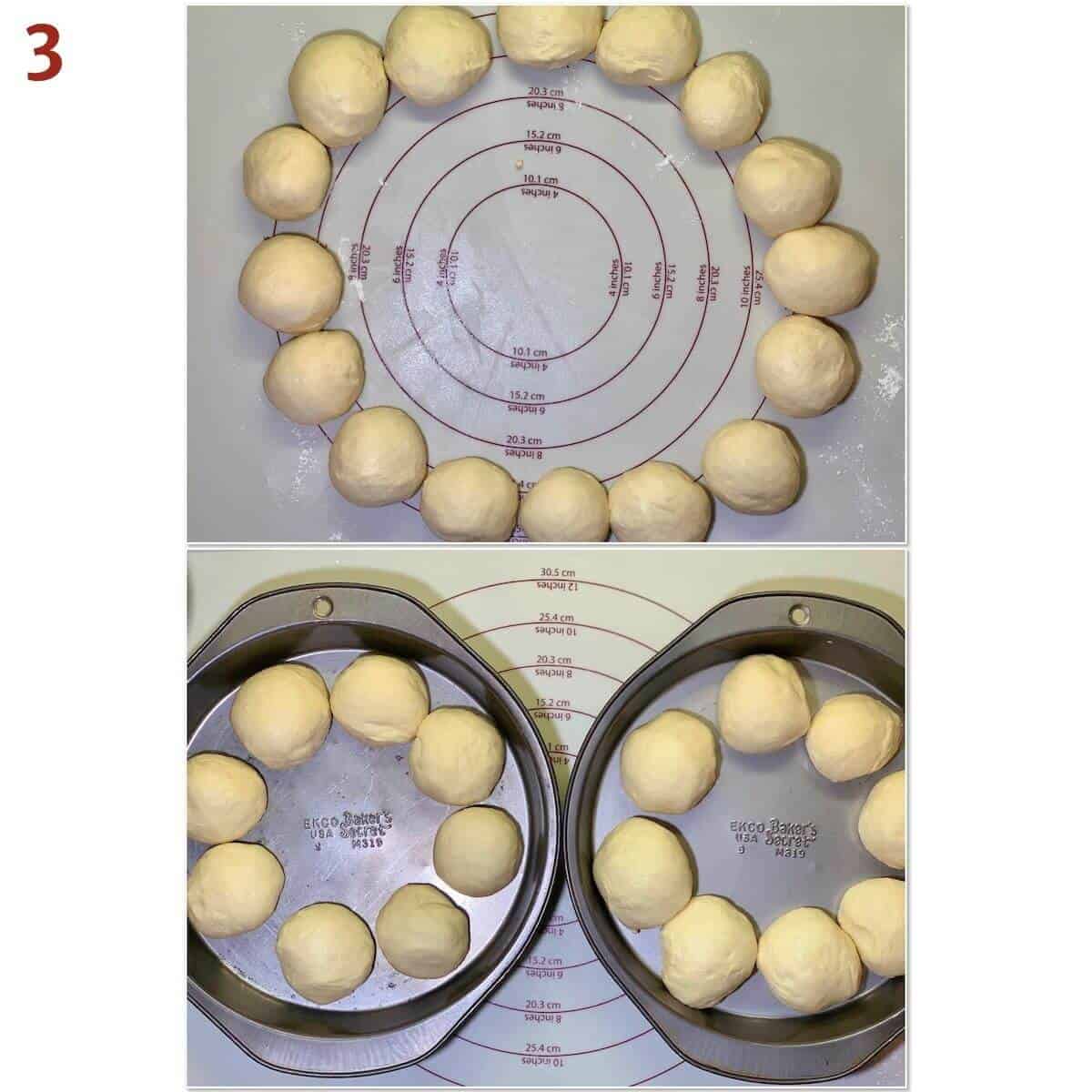
Step 3: Bake the rolls
Bake the rolls at 350˚F for 20 to 25 minutes (photo 4).

Storage and make-ahead instructions
Storage instructions: These rolls can be stored, covered tightly, for 2 to 3 days at room temperature or in the refrigerator for up to 1 week. For longer storage, freeze the rolls for up to 3 months. Thaw in the refrigerator or at room temperature, then reheat as desired.
Make-ahead instructions: You can let the dough have its first rise in the refrigerator overnight. Cover the dough tightly and place in the refrigerator for up to 12 hours. Remove the dough from the refrigerator and allow to fully rise for 2 more hours before portioning and shaping. This will allow the dough to develop even more flavor.
You can also shape the rolls before refrigerating them overnight. Remove the rolls from the refrigerator and let them rise, still covered, on the counter for about 1 to 2 hours before baking.
Questions asked and answered
Here are some questions you might have...
If you have a dedicated bread proofer, lucky you! Otherwise, cover the bowl with a lid or plastic wrap and place in a warm, draft-free place. An unheated oven with just the light turned on works wonderfully.
After portioning the dough into 16 pieces, take one piece and flatten into a rough square. Pull the corners down underneath to tighten the skin, then pinch them together. Place the ball on the counter, pinched side down, and cup your hand over it. Roll the ball around moving your hand in a circular motion...this is to seal that bottom pinched spot even more. Voila, a shaped roll ready for rising and baking!
Instant yeast doesn't need to be rehydrated (or "proved"), and can be added directly to the bread recipe's dry ingredients.
Active yeast needs to be rehydrated in a warm liquid before using (or have very warm liquid, between 120 to 130°F, in the recipe), and will take about 15 to 20 minutes longer to rise than instant yeast.
Whether you choose to proof your yeast is up to you.
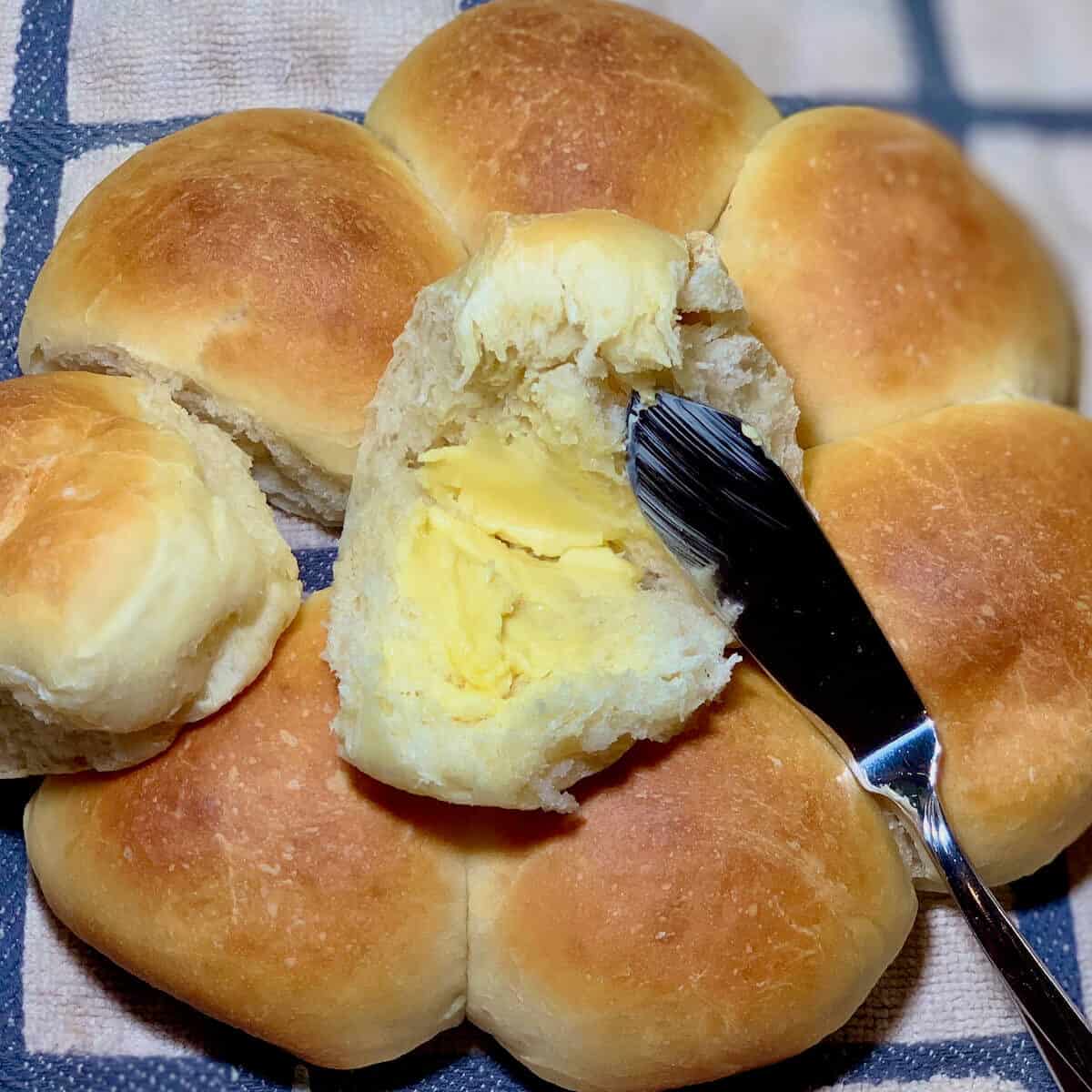
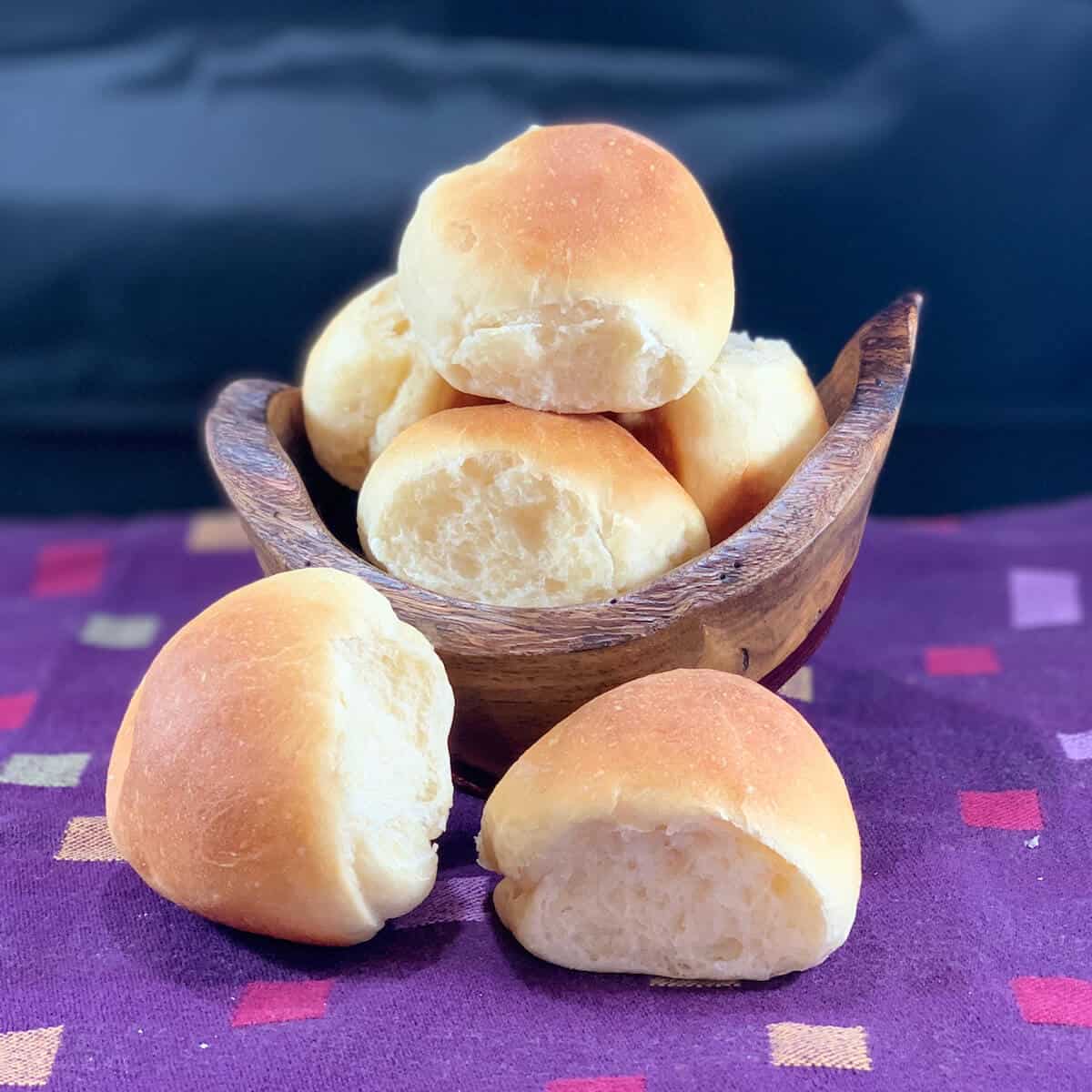
More recipes featuring sourdough discard to try
Recipe

Soft Sourdough Dinner Rolls
Equipment
Ingredients
- 2¾ cups all-purpose flour, or bread flour, adding more if needed
- 1 cup milk, warmed between 100°F to 110°F, see Recipe Notes
- ½ cup sourdough starter discard, at room temperature, see Recipe Notes
- ¼ cup potato flour
- 1 large egg, at room temperature
- 6 tablespoons unsalted butter, at room temperature
- 2 tablespoons granulated sugar
- 1½ teaspoons instant yeast, or rapid rise, see Recipe Notes
- 1½ teaspoons kosher salt
Instructions
- Combine all the ingredients together in the bowl of a stand mixer fitted with a dough hook or paddle attachment (or a bread machine on the dough cycle). Mix and knead on medium speed until a soft, slightly sticky dough forms, adding flour or water in 1 tablespoon increments until the dough pulls away from the sides of the bowl. If you don't have a stand mixer, you can mix this dough by hand with a large wooden spoon or a rubber spatula.
- Keep the dough in the mixer and knead for an additional 2 minutes or by hand on a lightly floured surface. The dough will be soft and tacky.
- Lightly spray a large bowl with canola oil spray. Place the dough in the bowl, turning it to coat all sides in the oil. Cover the bowl and allow the dough to rise in a warm place for 1 to 2 hours or until double in size. An oven with the light on works wonderfully.
- Spray two 9-inch round cake pans with canola oil spray. You can also bake the rolls in two 9-inch square baking pans, a 9- ×13-inch baking pan, a cast iron skillet, or on a half sheet baking pan lined with a Silpat silicone mat or parchment paper.
- When the dough has risen, knead it gently to deflate it. Divide the dough into 16 equal pieces with a bench scraper. Shape each piece into a smooth ball, then place 8 in each prepared baking pan, spacing them out evenly.
- Cover the shaped rolls and let then rise until they're puffy, about 1 hour. Meanwhile, adjust the oven rack to a lower third placement and preheat the oven to 350 °F.
- Bake the rolls for 20 to 25 minutes or until they're golden brown on top, rotating the pan halfway through. If the tops of the rolls are browning too quickly, loosely cover the pans with aluminum foil.
- Remove the pans from the oven and allow the rolls to cool for a few minutes before serving.
- Storage instructions: These rolls can be stored, covered tightly, for 2 to 3 days at room temperature or in the refrigerator for up to 1 week. For longer storage, freeze the rolls for up to 3 months. Thaw in the refrigerator or at room temperature, then reheat as desired.
- Make-ahead instructions: You can let the dough have its first rise in the refrigerator overnight. Cover the dough tightly and place in the refrigerator for up to 12 hours. Remove the dough from the refrigerator and allow to fully rise for 2 more hours before portioning and shaping. This will allow the dough to develop even more flavor.
- You can also shape the rolls before refrigerating them overnight. Remove the rolls from the refrigerator and let them rise, still covered, on the counter for about 1 to 2 hours before baking.





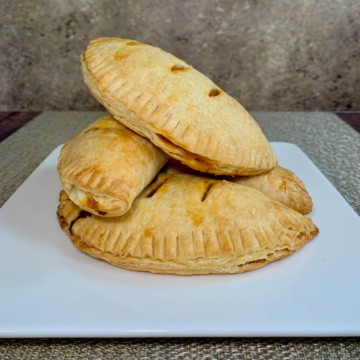


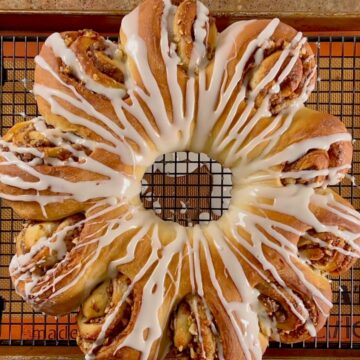




KATHI PETERS says
Im interested in the option to not use commercial yeast. If I understand you correctly, I would use 1/2 cup sourdough discard, 1/2 cup active (fed) sourdough, decrease the flour by 1/2 cup and the water by 1/4 cup and let it rise both times for double the amount of time. Am I correct?
Tammy Spencer says
Hi Kathy, Yes, you're correct. You're replacing the yeast with the fed starter and decreasing the flour and water to compensate. If it's easier, you can just use 1 cup of fed starter and omit the discard. Please let me know how it goes for you, and happy baking! 😉
Sandy Spector says
I made these today, without the potato flour, and they were simple and delicious. My family devoured them. Looking forward to having them on a regular basis.
Thank you for the recipe!
Sandy
Tammy Spencer says
Hi Sandy, I’m so glad you liked the recipe! Thanks for sharing 🙂
Gina says
Mmm, this recipe is just what I was looking for to make at least 60 rolls for a large Thanksgiving gathering! The make-ahead-and-freeze option is what I want to try, but with using the wild yeast/sourdough starter as THE yeast in the recipe. To do that, stopping at step five, would the rolls feasibly have to thaw and rise up to eight hours?
Tammy says
Hi Gina, Thanks for your question. When using fed sourdough starter without added yeast, you'll want to freeze the dough balls for as little time as possible because you can kill off the wild yeast. Chill the dough in the refrigerator after shaping and before freezing. Yes, you'll want to let the defrosted rolls rise longer, but it won't be as soft and puffy as dough that hasn't been frozen. Also, you might notice that the rolls won't be puffy even after baking.
I'd test the process with your fed starter beforehand to see how it works for you, and please let me know your results. Happy baking! 😉
Karin says
I’m eager to try this recipe but don’t have potato flour. I do however have potato flakes used for instant mashed potatoes. Could I blend them in my blender and use them as my potato flour?
Tammy says
Hi Karin, Thanks for your question! Yes, potato flakes should work just fine, especially if you crush them up a bit. Let me know how it goes, and happy baking! 😉
Bonnie says
Could u use gluten free flour in this recipe
Tammy says
Hi Bonnie, Thanks for your question. Having never tried baking this recipe gluten free, I can’t say for sure. It would probably depend on the type of gluten-free flour mix you’d be using. I know King Arthur Flour has one that they use for gluten-free bread. If you do try it, please let us know how it goes for you. Good luck & happy baking! 😉
Beatrice says
Hi! Could we replace the potato flour with mashed potatoes?
Tammy says
Hi Beatrice, thanks for your question. In order to give you a proper answer, I went to King Arthur Flour where I found a page with substitutes for potato flour in bread. Specific to mashed potatoes, their answer was that while you can use mashed potatoes, the amount of water present is a wild card. Here’s their advice:
“Can I substitute mashed potatoes for potato flour? Yes, with caution; your bread may collapse.
How to do it: Substitute 3/4 cup unseasoned mashed potatoes for every 1/4 cup potato flour called for in your recipe. Reduce any added liquid in the recipe by 50%, subsequently adding more flour or liquid if necessary to make a soft but not overly sticky dough. Bake the loaf thoroughly, to an internal temperature of at least 200°F.
Even after all this, a loaf made with mashed potatoes may collapse. I suggest using this substitution in rolls, rather than bread; a small roll's structure is inherently more stable than that of a high-rising loaf.“ [https://www.kingarthurflour.com/blog/2017/11/17/how-to-substitute-for-potato-flour]
If you do try the substitution, please let me know how it goes. Happy baking!
Annette Eddy says
Annette Eddy
Michele says
If I could give this recipe 10 stars, I definitely would! I just started sourdough starter 4 days ago and have been saving the discard in a jar in the fridge for the past 2 days because I hated throwing it out. With that being said, this is the FIRST time ever in my 53 years that I made anything with sourdough and I have no words to describe how amazing these came out, I'm not sure the word I'm looking for has even been invented yet - Just YUMOLA!
I have to tell you that I cheated and made the dough in my bread machine. I wasn't 100% sure that it would work because another thing I've never done is try a "non-bread machine" recipe in my bread maker. It was easy peasy. I just followed the order of ingredients as recommended by the manufacturer, then I put the sourdough discard and the instant yeast on top and at the end of the dough cycle, I had the most beautiful ball of dough I've seen come out of there ever!
Thank you so much for sharing this recipe, I look forward to trying many more of your recipes in the very near future!
Tammy says
Hi Michele, thanks for sharing! I love that you experimented with using your bread machine. I used to have one, and used it mostly on the manual cycle to make challah or other yeast doughs. I'd never tried it with a sourdough recipe (I didn't have my starter back then), so I really appreciate you reassuring everyone that it will work! 😉
Anecia says
Looks delicious!
Tammy says
Thanks, Anecia!
Tom says
Your recipe states you mix everything together at the beginning in the mixer. Does this mean you do not need to feed the instant yeast prior to mixing everything else at the beginning?
scotchscones says
Hi Tom, Good question! Some folks do sprinkle the yeast and the sugar on the warmed liquid for about 5 minutes to make sure that the yeast foams (called "proofing the yeast"), but I tend to not proof my yeast because I know it's fresh and active. I haven't seen a difference using either method, again as long as the yeast is fresh. If in doubt, go ahead and proof the yeast before adding the rest of the ingredients. Let me know which method you use, and happy baking!
Jessica says
How long do you let it rise after shaping the rolls. The directions make it out like you shape it and then go right on to baking???
scotchscones says
Good spot, Jessica! I've updated the recipe to include the 1 hour second rising time after you shape the dough. Happy Baking!
Chet Brewer says
i've tweaked the KAF sourdough and the bread bakers apprentice recipes similarly. Two things I've done differently is add honey instead of sugar and substitute buttermilk for milk. I've done it with non fat milk too, the only real difference is the buttermilk is a little softer and has a bit more twang, my starter is pretty mild so it doesnt make things too sour. I like having it written down though, thanks for putting this together
scotchscones says
I love the idea of using buttermilk instead of regular milk to up the tanginess of the roll. I'll have to give that a try and see how it does with my starter discard. I'm glad you like to riff on recipes, too! Thanks for sharing. 😉